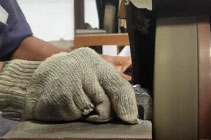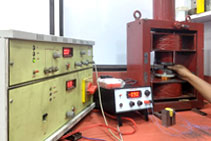Ashtec products world-class team of Engineers, Designers, and Project Managers direct the production of permanent magnet products and assemblies at our facilities. You will receive outstanding support at every stage of your project, no matter what material you choose or how complex your design. Our wide range of capabilities include manufacturing, design and engineering, prototyping, simple and complex assemblies and more. Our professional Team’s technical knowledge and experience provide initial and continuous engineering and manufacturing support.
Learn why Customers around the world choose our permanent magnet production and fabrication services. Ashtec products strives to provide the highest-quality products on the market and superior Customer service




Cast Alnico magnets are mostly produced in different processes as follows:

1. Induction Melting
The selected compositions of aluminum, nickel, cobalt, and iron for the grade to be manufactured are placed in an induction furnace and melted at over 1750°C. Extra aluminum may be added to compensate for the quantity wasted when the mixture melts at a much lower temperature. During the melt and before casting, the exact composition of the mixture can be confirmed by analyzing a sample using an x-ray spectrometer

2. Casting
At this second stage, the molten material is poured into a shell mold and allowed to cool. As the metal cools, the shell molds start to burn such that when the magnets are cold, the shell is almost disintegrated. The shell mold is made using a pattern plate and a molding machine. The patterns are made to have a similar size to the required magnet size though with extra allowance for shrinkage and machining to size.

3. Snagging
By this time, the magnets are cast and can be extracted from the molds, after which they are fettled on grinding wheels to remove the runner gates.

4. Heat Treatment, Annealing and Grinding
The next step involves heating the magnets to a very high temperature and placing them into magnetizers. This will allow the magnets to start cooling down in the presence of a very strong magnetic field. This is also known as hardening the magnets. By placing the magnets in a large tempering oven for a few days, they will eventually stabilize. Next is to subject the magnets to finish-grinding to tight tolerances.

5. Testing
Alnico magnets produced this way are tested with a hysteresis graph testing machine, gauss meter or flux meter.

6. Magnetizing
Finally, the magnets are inserted into a coil or solenoid magnetizer. This allows the electrical pulse to generate the necessary electrical field needed to fully magnetize the cast alnico magnets.




